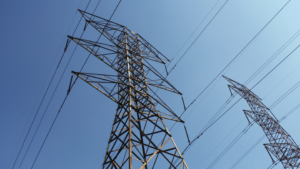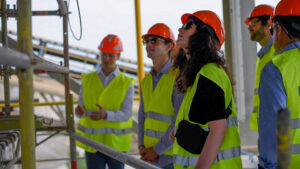Carbon dioxide removal technologies are a range of carbon management approaches that can remove carbon dioxide (CO2) and other greenhouse gases from the atmosphere.
Carbon Dioxide Removal
Carbon management, carbon capture, and carbon removal are interconnected concepts that all aim to address the increasing levels of carbon dioxide (CO2) in the atmosphere and help mitigate climate change.
Carbon removal, or carbon dioxide removal (CDR), focuses on actively removing CO2 from the atmosphere, either through natural or engineered methods. Natural methods include afforestation (planting trees) and ocean-based solutions, while engineered methods involve technologies like direct air capture (DAC).
What is Direct Air Capture?
Direct air capture is a set of engineered technologies made to remove CO2 directly from the air. Unlike methods that reduce emissions at the source—such as carbon capture on industrial facilities—DAC systems pull CO2 from the atmosphere, regardless of how it got there. This makes DAC a versatile and scalable solution with the potential to significantly reduce global carbon emissions.
How does direct air capture work with other climate solutions?
While DAC technology is a promising tool in the fight against climate change, it should not be viewed as a singular solution or silver bullet for solving climate issues. DAC is most effective when integrated into a comprehensive strategy that includes other carbon management and CO2 removal methods and increased use of renewable energy sources.

How does direct air capture work?
Air Intake:
DAC facilities typically use large structures or fans that pull in the surrounding air.
Removal:
Once the air is collected, the CO2 is either absorbed by a chemical solution or by a solid material. Both methods selectively capture CO2 molecules.
Separation:
Next, the CO2 is separated from the solid or liquid materials using heat.
Storage or Reuse:
This CO2 can be stored deep underground in geologic formations or reused in various industrial processes.
Benefits of Direct Air Capture

Carbon Neutrality: DAC is a vital carbon management tool for achieving net zero climate objectives, especially when coupled with carbon storage or reuse. According to global climate modeling by the Intergovernmental Panel on Climate Change, we must reach net zero emissions by midcentury to keep the average global temperature rise to 1.5°C to 2°C above preindustrial levels by 2100.

Versatility: DAC is not limited to specific industries or regions, making it a versatile solution for reducing atmospheric carbon concentrations globally. DAC can address historical emissions and offset emissions from challenging to decarbonize sectors by removing CO2 in the surrounding air, mitigating the effects of past and present emissions on the global climate.
Considerations

Energy Requirements: Some DAC technologies require substantial energy inputs, and sourcing low-carbon energy is critical for the overall sustainability of a DAC facility.

Costs: Current DAC processes can be expensive. Ongoing research and technological advancements aim to reduce costs and increase efficiency. For DAC to make a significant impact, large-scale deployment and infrastructure development are necessary.
Resources
GPI’s Atlas of Direct Air Capture
GPI’s Atlas of Direct Air Capture examines key factors that impact regional suitability for developing DAC technology and associated infrastructure. For a DAC facility to achieve net-negative emissions, it must remove and store or reuse more CO2 from the atmosphere than is released during a facility’s operation. Building direct air capture facilities in locations with ideal operating conditions, access to underground geologic storage, and low-carbon energy sources can help facilities achieve net-negative emissions.
What’s Next?
Exciting developments are on the horizon as the Great Plains Institute gears up to provide an in-depth analysis of the employment landscape surrounding two DAC hubs awarded funding by the Department of Energy. In collaboration with the Rhodium Group, GPI is set to deliver a comprehensive overview of the jobs associated with these innovative hubs. Stay tuned for a detailed exploration of the economic implications, workforce dynamics, and the broader impact on industries
